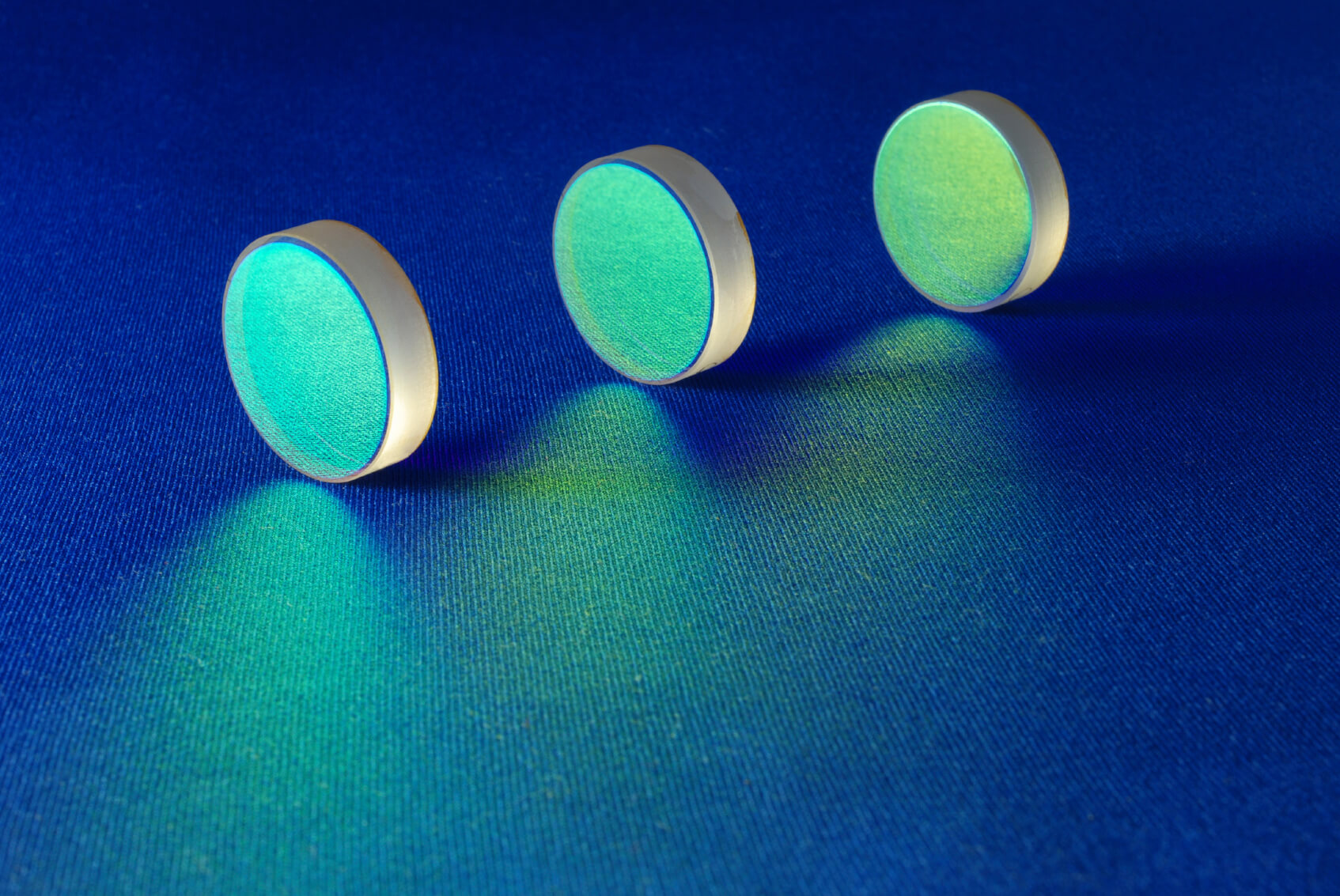Laser Optics









Salvo Technologies provides an extensive range of laser optics, including lenses, mirrors, filters, and other laser-related parts. Laser lenses concentrate, homogenize, or shape laser beams. Applications requiring beam guiding work best using laser mirrors. A fraction of the laser light is transmitted or reflected by laser filters. Laser windows transmit specific wavelengths or shield delicate parts or work areas from stray light.
Beam steering and material processing are examples of the various laser instruments or application areas where laser optics achieve higher performance at particular laser wavelengths or over a range of wavelengths; laser optics use specialized substrates, coatings, or a combination of the two.
High laser damage threshold coatings for CW or pulsed lasers are standard for our laser optic coatings. Designed and produced specifically for use in laser applications, laser optics are a class of optics. Optical components for more general applications built from more widely available glass types are covered with broadband coatings or have an uncoated design suitable for a wide range of wavelengths. On the other hand, lasers typically have minimal wavelength ranges or wavebands (ignoring harmonics); thus, laser optics materials and coatings typically require more stringent polishing, coating, and cleaning techniques. We specialize in laser optic applications used in high-power and ultrafast lasers.

Broadband and custom-tuned anti-reflection (AR) coatings ensure high light transmission through optical systems and mitigate ghost effects, especially with multiple surfaces. AR coatings can be incorporated with spectral filters and are commonly used on optics, sensors, and display windows.

High-power thin film mirror coatings are the central area of expertise for Salvo Technologies. The mirrors in consideration are laser line mirrors made to reflect light with high efficiency and minimal scattering or absorption. In addition, we collaborate with external agency institutions to regularly certify the performance of our laser damage threshold. At Salvo, we offer Laser Line High Reflectors at 99.995% from visible to NIR & 99.9% UV.

Dichroic beamsplitters are called harmonic separators to reflect one wavelength while transmitting the other. The front surface has a beamsplitter coating, while the back surface is AR V-Coated at wavelengths of transmitted light. We offer high reflectance from both S-and P-Polarized light.
At Salvo Technologies, we offer Four Wavelength Configurations Designed for Nd:YAG Laser Applications:
- 1064nm Reflected, 532nm Transmitted
- 532nm Reflected, 1064nm Transmitted
- 355nm Reflected, 532 and 1064nm Transmitted
- 266nm and 355nm Reflected, 532 and 1064nm Transmitted
The front surface of the UV-fused silica substrate is covered with a reflective beamsplitter, and the back surface is coated with an antireflection (AR) V-coating for the transmitted wavelength. Both coatings are designed for an incidence angle of 45 degrees (AOI). Although it is also possible to reverse the propagation direction of the beams incident on each beamsplitter to combine light instead of dividing it, each beamsplitter has a part number and an arrow indicating the preferred propagation direction etched on its edge.
The interaction of light reflected from the optic’s front and back surfaces results in unwanted interference effects (such as ghost pictures), which the AR V-coated back surface helps to minimize. When applying an AR coating to the back side of the beamsplitter, this proportion decreases to an average of less than 1% for the coating’s full operating range. Typically, 4% of light incident at 45° on an untreated substrate will be reflected. Each beamsplitter contains a 30 arcmin wedge; in addition to this feature, thus the amount of light reflected off this AR V-coated surface will diverge.

Salvo Technologies offers a variety of optical beamsplitters. Our plate beamsplitters have a front surface that is coated, which controls the beam-splitting ratio, and a back surface that is wedged and AR coated, which reduces interference and ghosting effects. Pellicle beamsplitters offer superior wavefront transmission qualities while preventing ghosting and beam offset. You can choose between polarizing and non-polarizing types of our cube beamsplitters. For use with our lens tube and cage systems, the pellicle and cube beamsplitters can be purchased pre-mounted in cubes. Dichroic beamsplitters have wavelength-dependent beam-splitting characteristics. They help mix and split different-colored laser beams.
Polarizing beamsplitters, by design, divide light according to its polarization state rather than its wavelength or intensity. In semiconductor or photonics instrumentation, polarizing beamsplitters transmit p-polarized light while reflecting s-polarized light. Optical isolators use polarizing beamsplitters to stop feedback-caused harm. Depending on the configuration, polarizing beamsplitters are commonly made at angles of 0° or 45° with a 90° separation of the beams.
Polarizing beamsplitters from Salvo Technologies are available in various designs, such as plate, cube, or lateral displacement. For optimal performance, when utilized with ultraviolet, visible, or infrared wavelengths, plate beamsplitters come in various sizes. Applications requiring robustness, easy mounting, or system integration are perfect for cube beamsplitters. The incident beam will be separated into two displaced parallel beams using lateral displacement beamsplitters. In addition, polarizing beamsplitters are available for popular laser wavelengths or wavelength ranges.
Light emitted is split by non-polarizing beam splitters at a predetermined ratio regardless of polarization. Beamsplitters, called non-polarizing beamsplitters, are made to divide light without changing their S and P polarization states. Non-polarization Beamsplitters are frequently used in interferometry, life science instrumentation, and laser beam modification, among other applications. Non-Polarizing Beamsplitters are available from Salvo Technologies in various shapes, such as plate, cube, and lateral displacement.